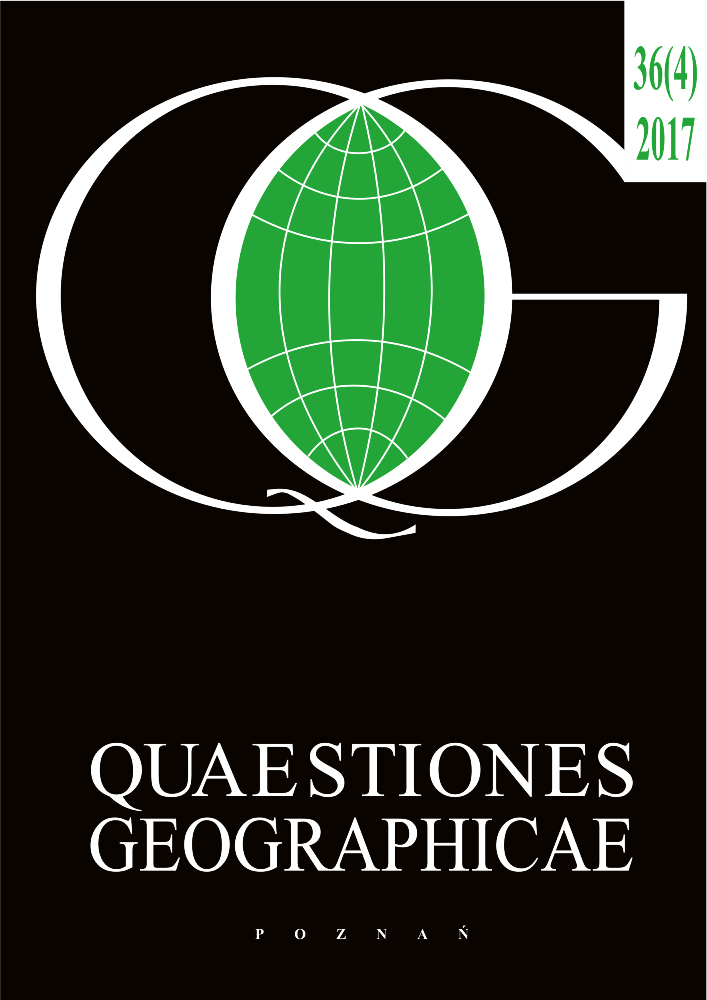Abstract
Czechia lost more than 3,000,000 inhabitants as a result of the WW II. Germans displaced from the borderland formed the largest part. The newcomers after 1945 were of a different character – without any relation to their new settlements. This population formed a special social milieu familiar with the socialist way of thinking and that of a suppressed middle class. The consequences of it are seen in demographic, economic, environmental and social areas. After 1989, the factories in the borderland were mostly closed down, armies left the territory, people were not prepared to start their own businesses. Large-scale landscape protection formed a new barrier. Tourism is not able to substitute for the decrease in employment. The hope in cross-border collaboration has been overestimated.References
Adams N., Alden J., Harris N., 2016. Regional development and spatial planning in an enlarged European Union. Routledge.
Balibar E., 2009. Europe as a borderland. Environment and Planning D: Society and Space 27(2): 190–215.
Bazin A., 1998. Les regions frontalières Tchèques: Différenciation interne et enjoux Européens. Revue d’études comparatives Est – Ouest 29(4): 229–255.
Bičík I., Jeleček L., Kabrda J., Kupková L., Lipský Z., Mareš P., Šefrna L., Štych P., Winklerová J., 2012. Vývoj využití ploch v Česku (Land use in Czechia). Czech Geographical Society, Praha.
Bufon M., 2007. Border regions in a re-integrated Europe. Moravian Geographical Reports 15(1): 2–13.
Chitnis R., 2012. “Moral limits”. The expression and suppression of guilt in Czech post-war writing about the borderlands. Central Europe 10(1): 18–54.
Chromý P., Skála J., 2010. Kulturně geografické aspekty rozvoje příhraničních periferií: analýza vybraných složek kulturní identity obyvatelstva Sušicka (Cultural-geographical aspects of the borderland peripheries development: An analysis of selected parts of the cultural identity of inhabitants in the Sušice region). Geografie 115(2): 223–246.
Daněk P., 2000. Existuje politická kultura českého pohraničí? (Does a politicul culture of the Czech borderland exist?). Geografie 105(1): 50–62.
Gerlach D., 2010. Beyond expulsion: The emergence of “unwanted elements” in the post-war Czech borderlands. East European Politics and Societies 24(2): 269–293.
Glassheim E., 2014. Unsettled landscapes: Czech and German conceptions of social and ecological decline in the post-war Czechoslovak borderlands. Journal of Contemporary History 50(2): 318–336.
Jeřábek M., Dokoupil J., Havlíček T., 2004. České pohraničí: Bariéra nebo prostor zprostředkování? (The Czech borderland: A barrier or the area of mediation?). Academia, Praha.
Kaplan D.H., Häkli J., 2002. Boundaries and place: European borderlands in geographical context. Rowman & Littlefield, Lanham.
Kind-Kovács F., 2004. Memories of ethnic cleansing and the local Iron Curtain in the Czech-German borderland. Nationalities Papers: The Journal of Nationalism and Ethnicity 42(2): 199–222.
Knippschild R., 2011. Cross-border spatial planning: Understanding, designing and managing cooperation processes in the German–Polish–Czech borderland. European Planning Studies 19(4): 629–645.
Kučera Z., Kučerová S., 2012. Historical geography of persistence, destruction and creation: The case of rural landscape transformations in Czechia’s resettled borderland. Historická geografie 38(1): 165–184.
Liebenath M., 2007. Europeanisation of cross-border governance? A case study on the cause, form and consequences of a co-operation project in the German–Polish–Czech border triangle. Space and Polity 11(2): 151–167.
Liebenath M., Knippschild R., 2005. Systematic evaluation of cross-border networks of actors: Experience with a German-Polish-Czech cooperation project. Journal of Borderland Studies 20(1): 73–90.
Máliková L., Klobučník M., Bačík V., Spišiak P., 2015. Socio-economic changes in the borderlands of the Visegrad group (V4) countries. Moravian Geographical Reports 23(2): 26–37.
Google ScholarMareš P., Rašín R., Pipan P., 2013. Abandoned landscape of former German settlements in the Czech Republic and in Slovenia. In: Rotherham I.D. (ed.), Cultural severance and the environment. Springer, Berlin: 289–309.
Matušková A., Rousová M., 2014. Czech-German relations in the context of shadows of the past and geographical education. Journal of Geography 113(1): 10–19.
Pavlakovich-Kochi V., Morehause B.J., Wastl-Walter D., 2004. Challenged borderlands. Ashgate, Aldershot.
Perlingerová I., Vaishar A., 2012. Rural development potential of peripheral areas – case study Bochov (W Bohemia). Forum Geographic 11(1): 100–108.
Perrons D., 2011. Regional disparities and equalities. Towards a capabilities perspective? In: Pike A., Rodriguez-Pose A., Tomaney J. (eds), Handbook of local and regional development. Routledge, Abingdon: 59–73.
Petrjánošová M., 2012. “I can’t speak German so I can’t communicate with them”: Language use in intergroup contact between Czechs and Germans. Human Affairs 22(1): 69–78.
Ptáček J., Chromý P., Jančák V., 2013. Social capital and local socio-economic development. The case of Czech peripheries. Tijdschrift voor Economische en Sociale Geografie 104(5): 604–620.
Sklenička P., Šímová P., Hrdinová K., Šálek M., 2014. Changing rural landscapes along the border of Austria and the Czech Republic between 1952 and 2009: Roles of political, socio-economic and environmental factors. Applied Geography 47: 89–98.
Vaishar A., Dvořák P., Nováková E., Zapletalová J., 2008. Settlement problems in the Czech borderland. Geografický časopis 60(3): 241–253.
Vaishar A., Dvořák P., Hubačíková V., Nosková H., Nováková E., Zapletalová J., 2011. Regiony v pohraničí (Regions in the borderland). Institute of Geonics, Czech Academy of Sciences, Brno.
Zaiotti R., 2011. Performing Schengen: Myths, rituals and the making of European territoriality beyond Europe. Review of International Studies 37(2): 537–556.
Zich F., 1998. Germany and the Germans in the attitudes of people living on the Czech – German border. Czech Sociological Review 6(2): 241–259.
